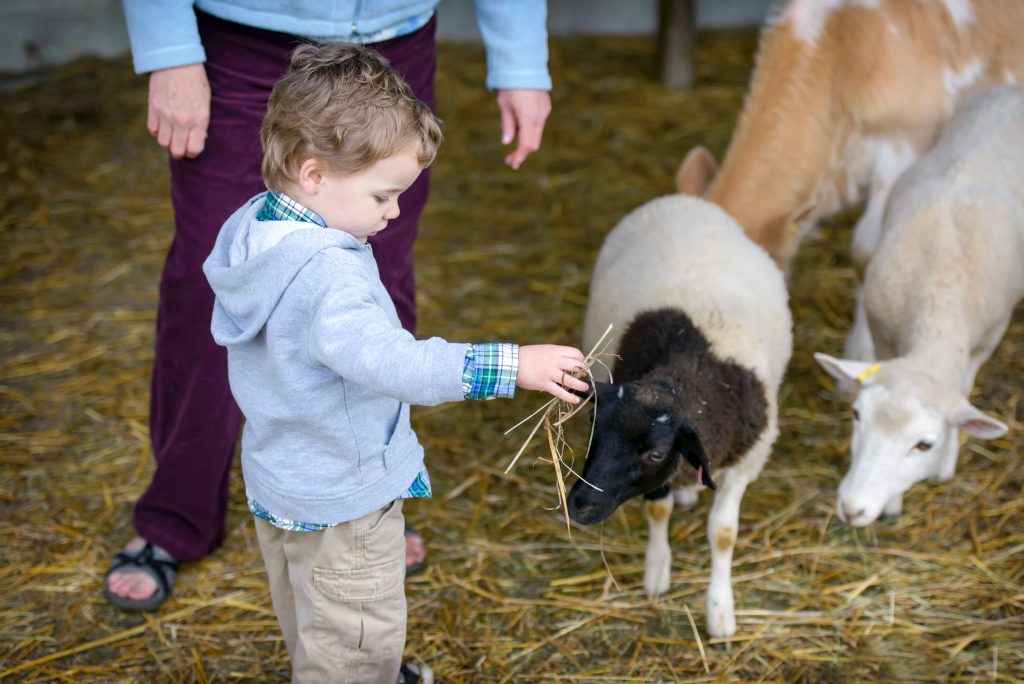
Summer equals outdoor time for many families, and that often means more face time with animals as well.
Dr. Tony Woodward, Chief of Emergency Medicine at Seattle Children’s Hospital, has seen children who have been injured by or become ill after contact with animals throughout his career in the emergency department. He offers advice and tips to families about keeping kids safe around animals.
“Most animals don’t understand humans and how we operate,” Woodward said. “Combine that with an excited or inquisitive young child who has no concept of harm, and we see kids get hurt.”
The animals closest to home can hurt, too
Woodward says the most common injuries he sees are bites from household pets that can lead to wounds that become infected.
“With good weather, families get together and bring pets,” he said. “When you have unfamiliar dogs around excited kids, the animals can get stressed and react by biting or scratching.”
Woodward says parents should teach kids to ask permission before approaching a pet, especially one they don’t know.

“Dogs don’t understand hugs and kisses, which is how we teach children to be affectionate,” he said. “Teach your child to never put his hand out initially to an unfamiliar dog and instead keep their hands behind their back. Ask permission from the owner, and let the dog come to you and your child first.”
Woodward says parents should teach kids not to disrupt an animal when it’s eating, sleeping or stressed.
“Even the family pet can act out if the animal is surprised, stressed or having a meal,” he said.
If a dog does bite your child, it’s important to report the incident to local authorities.
Cleaning after interacting with animals
After kids interact with animals, they should be washing their hands, Woodward said.
“At home and at the petting zoo kids should be handwashing after they touch animals,” he said. “Those furry sheep and other animals can carry pathogens like shigella and salmonella that can put a child in the hospital.”
And of course, keep food, toys, bottles and pacifiers out of reach during visits to a petting zoo.
Animals in the outdoors
While the most common injuries are with domestic animals, Woodward says families should take precautions in the outdoors.
“Animals in national parks like bison, elk and deer are wild animals, and they should not be approached,” he said.
Constant supervision is important to keep your kids at close range.
“If you’re hiking, never let kids go ahead or trail behind,” Woodward said. “Keep kids in the middle of the group because predatory animals may go after the perceived weakest member in a pack.”
Make noise by talking and using bells to alert animals and prevent surprise encounters. The same principle of announcing your presence applies to picking up rocks or pieces of wood, because a snake or spider may be lying beneath and can bite hands and legs if surprised.
If you’re camping and find a bat in your cabin or tent, it’s important to be seen by a doctor—there is a risk of rabies, and bat bites can be so subtle as not to be noticed.
Beach safety
Woodward says the beach is one of the biggest outdoor risks.
“By far the number one issue we see is drowning,” he said. “But there are also sea creatures that can hurt—jellyfish can sting, and if you’re traveling, look out for advisories for harmful sea animals. Always, always watch your kids in the water.”
In general, Woodward says that supervision and prevention are key to preventing injuries from animals and the environment. In group situations, adults often assume someone else is watching the kids, which can effectively mean no one is directly responsible.
“A lot of times no one is assigned to keep an eye on the kids, and that’s can lead to accidents or delayed recognition of a safety hazard,” he said.
If a child is injured by an animal, check in with the doctor.
“If it’s a scratch, clean it well and keep an eye on it, but if there’s blood, it’s a good idea to call the doctor, he said.”

